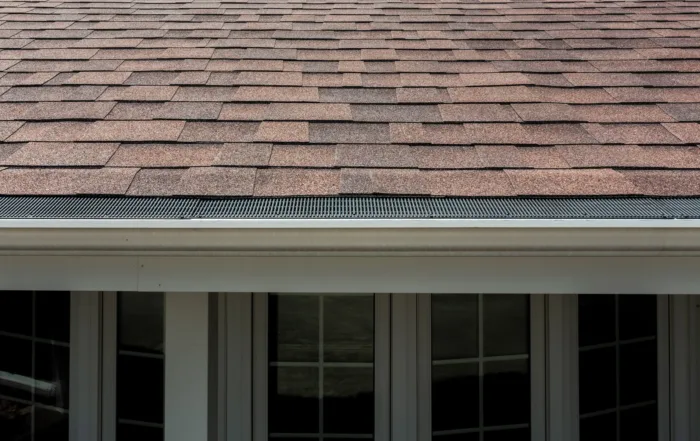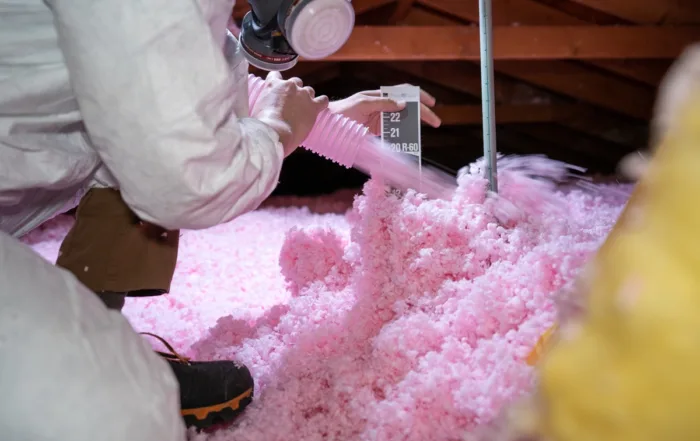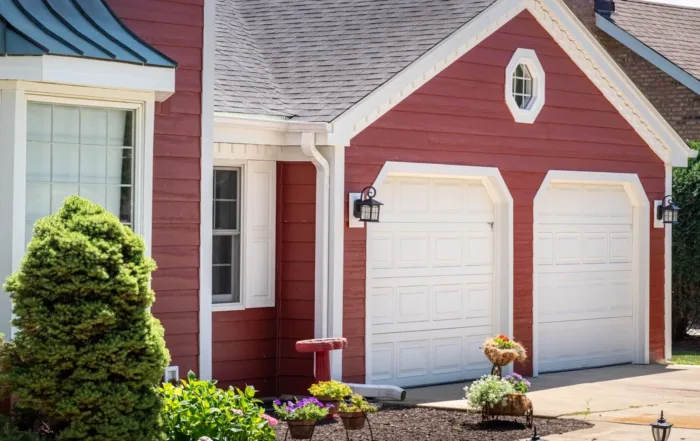Looking to make the ultimate exterior home improvement to stand out amongst your neighbors? Consider an upgrade to a siding board with superior durability and design aesthetic.
Both Hardie Board Siding and LP SmartSide Siding are considered “top of the line” in regards to looks, durability and warranty. Both companies have guidelines on how to install the product and these guidelines must be followed to obtain the long term warranty; we have plenty of experience with both.
Construction
James Hardie Board is arguably the best ‘fiber cement’ siding product on the market. Fiber cement siding is a composite material composed of cement and cellulose (wood fibers) bonded together. It is tough as nails, naturally fire-resistant and carries a 30-50 year warranty depending on the product. Hardie siding and trim boards are factory-painted and cured for an ultra-long-life exterior coating. It usually takes 2-4 weeks for Hardie to custom-manufacture the product specifically for your home, so note the short wait time.
LP SmartSide is the new kid on the block – an ‘engineered wood’ product made from wood fibers and a bonding agent. LP is composed of compressed aspen wood chips (aspen wood chips do not curl) with 4 components of protection. They mix the wood chips with MDI resin (Gorilla Glue), zinc borate (prevents rot and termites) and waxes. The product is made-t0-order with a similar factory-installed painting process.
LP’s manufacturing process is so efficient that they can utilize 99% of all tree material. But despite this increased use of natural resources, we appreciate that LP gives back to the environment by planting 2 trees for every 1 tree they cut down.
Installation
Fiber cement is a relatively heavy building material and is easier to crack than LP. Our guys work out plenty and are always up for the job, but this mildly affects the final time to complete the job and can post a slight (1-2%) risk that a board breaks during shipment (we would replace it free of charge, but it can add a little time). Almost all Hardie jobs go according to plan; we’re just explaining the differences between products from every angle. LP installs easily, is tough as nails and can be cut with a regular circular saw where Hardie needs to be cut with a concrete-specific blade. But we have plenty of those too!
Overall Aesthetic
While both products look like beautiful, natural wood from the street, up close we feel that LP’s woodgrain looks ever so slightly more realistic and therefore just barely edges out Hardie for curb appeal. Both products offer excellent colors and are the most durable siding boards we’ve ever worked with. Take a close look at each and get a feel for which you feel you prefer. No matter your choice, you’re going to be thrilled with the final result. You just became the most attractive home on the block, and it sure feels good!
Which One's Best? Our Honest Opinion:
“There are plenty of brands we’ll tell you to steer clear of, but both of these companies check all of our boxes for looks, durability and warranty. Which product is ‘best’ comes down to your unique home and taste.
For horizontal siding, LP has a more pronounced wood grain pattern and comes in 16′ lengths compared to Hardie’s 12’ sections – this can be a design consideration. For vertical siding, LP panels use a tongue-and-groove interlocking construction, while Hardie Board has straight edges. If you want vertical siding, we like the finished look of LP’s tongue-and-groove construction over Hardie’s more traditional construction. For horizontal siding, the competition is neck and neck. We rarely ever see continuing issues with either product, and color selections from both are virtually unlimited.
Bill Lang: “I did my own test and submerged samples of both products underwater for 4 weeks. A month later, both products did not lose any strength, shape or paint. Pretty impressive.”
Bill adds, “I have Hardie horizontal siding on my own house, but you can’t go wrong with either.”




